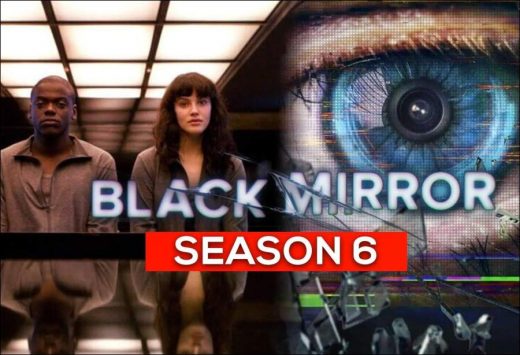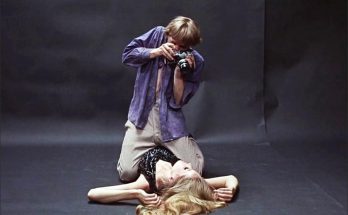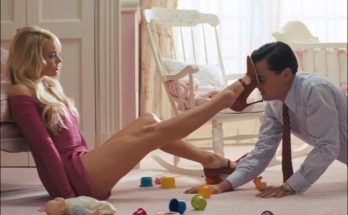The world has changed a lot in the last twelve years, and the sixth season of Black Mirror, released for the first time since 2019, is very different from its predecessors. We saw the effects of this problem in the fifth season, and we can define that season as the period when Black Mirror showed “burnout syndrome”.
How eagerly did you start watching the new season of Black Mirror? Was it just old loyalty or habit to the show that made us do this? How original is Black Mirror’s main theme, which we can define as “technology anxiety”, in 2023, at a time when we first survived a deadly pandemic and then seriously discussed the dangers of artificial intelligence via ChatGPT, and felt the dystopian feeling very much within us?
“One of the steps to starting to make the show was to make something that was unlike anything else on television,” series creator Charlie Booker said at the time. But the series is now too old, its competitors are too many, and it is in danger of repeating itself.
When Black Mirror first appeared, it covered the striking impact of technology with original and terrifying stories, giving us the opportunity to discuss innovations that we did not yet know what to do with. The tone of the series was always gloomy anyway, and its strange or surprising endings left you with a feeling of inner discomfort. However, as I said, the world has changed a lot in the last twelve years, and the sixth season of Black Mirror, which was broadcast for the first time since 2019, is very different from its predecessors.
We saw the effects of this problem in the fifth season, and we can define that season as the period when Black Mirror showed “burnout syndrome”. The level had even dropped to the point where male gamers were obsessed with VR avatars having sex with each other. If we go back a little further, we can see that new variations in creativity began in the third season of the series after it was moved to Netflix. With episodes like “Nosedive,” written by Michael Schur and Rashida Jones, and a queer love story like “San Junipero,” the series strayed into the byways of technology-innovation hell. In 2018, they released the interactive episode called “Bandersnatch”, which was very interesting and offered viewers a playable “Choose Your Own” experience.
Now we are faced with a recovery effort and the series is trying to do this in a nostalgic way. Three episodes of the five-episode season take place in the past; “Beyond the Sea” takes place in 1969, “Demon 79” in 1979 and “Mazey Day” in the early 2000s. The first two episodes, “Scary Joan” and “Loch Henry”, focus on the “screen phenomenon” as classic Black Mirror stories. In summary, this season places its stories not in the near future, but in the past, old myths and established narrative traditions. Floors with VHS tapes, digital cameras and even supernatural talismans…
Placing these strange and somewhat schizophrenic stories in the past, establishing an atmosphere of regressive anxiety, may seem like a smart strategy for the success of the series, but going back instead of discussing what to do at this very moment in world history is safe, yes, but extremely stale. Black Mirror shows a regressive psychological reflex, such as returning to the mother’s arms of individuals who cannot cope with the problems they face, but it cannot be said that this saved the series.
In the episode Beyond the Sea, in an alternative 1969, while we watch the relationships of two astronauts on a spaceship with their replicas and their families on Earth, we encounter a paparazzi driving a famous actor crazy in Mazey Day. In Demon 79, we witness the transformation of a black shoe sales girl in cooperation with the devil. There is nothing new or attractive about these three issues. Moreover, it is necessary to draw attention to another thing that the series does, Black Mirror traps its heroes in a mirror, a loop, in these three episodes. The best definition for the last season of Black Mirror comes from this: a mirror-within-a-mirror season.
The astronauts miss the opportunity to spend time on earth with the help of the replicas they have and are stuck in the spaceship. Despite all her good intentions, our paparazzi girl cannot get out of the loop of the surveillance job she did in the finale, and the character who cooperates with the devil will never be able to return because he accepts this mission. In their struggle, these characters will never be able to get out of the mirror and the cycle will continue. It’s kind of an Ouroboros situation.
Moreover, while these stories are being told, it is sad to encounter a macho narrative of male pain and desire that is inspired by nothing else in an episode like Beyond The Sea (If you want to watch an astronaut drama that deals with the difficulty of coping with tragedy from afar, I suggest you check out the AppleTV+ work For All Mankind).
Perhaps we can interpret this state of confinement as an interpretation that we have failed to cope with these concerns in the past. So, if we couldn’t cope with technology, social media, talismans and demons in the past, what to do today? What do you think the two episodes of the series, set in our current world, answer to this question?
In one of the interesting episodes, we follow a couple who decide to make a documentary film about a serial killer operating in a small Scottish town in Loch Henry. The episode, from Sam Miller, our favorite director of works like Luther and I Will Destroy You, reads like a David Fincher story in which the central characters are all dead or dismembered, the town itself is almost a ghost town, and the secrets that still exist are better left buried.
In fact, this episode is an episode that oscillates between the past and the present. The interesting thing is that we encounter the same thing again, the young director who tries to make a documentary about the past, the facts that emerge eventually get pulled into his own documentary and he is condemned there even if he doesn’t want to. The fact that the mask that turned out to be one of the torturer killers in the episode is the same as the documentary award statue that the child eventually won, is one of the symbols that describe this cycle, equating the real-life tragedy with the documentary that records it. Mirror within a mirror…
Let’s look at the only different episode this season. Only the first episode, titled Joan Is Awful, feels like a traditional Black Mirror episode in that it focuses on exploring the potentially dangerous effects of new technology. This is an episode that also includes a Netflix reference. In the show, we watch a story in which a platform called Streamberry does not require the consent of real people and instantly transforms their real stories into a TV series with artificial intelligence.
The episode follows Joan (Annie Murphy), who is experiencing problems in her own life. When she sees herself portrayed by Salma Hayek Pinault in a series that somehow has access to her most intimate moments, she necessarily comes into conflict with the entertainment industry. The episode’s question is simple, familiar, but still impactful to us: what would you do if you saw your own life in a TV series format? In this episode, there is a mirror-within-a-mirror format because we understand that the story in which Joan sees her own life being serialized is not actually real, and she is living in a serial where another person’s life is being portrayed. Despite this tragic interconnectedness, this is the only episode of the season that proposes an “exit”, but it comes up with a solution (very funny for today) such as destroying the digital system with an analog axe!
Avoiding struggling with our present troubles and setting the stage in the past, trapping stale stories and heroes in a cycle; To get rid of technology phobia by breaking it by hand… The summary of this season is that Black Mirror’s mirror cannot show new things. Still, if we want to remember an episode from this season, I would choose Demon 79, at least there is endless potential in madness. We already see the phrase “A Red Mirror Film” at the opening of the episode. This episode, which underlines that there can be a different exit by watching a hero who, despite his entire cycle, progresses towards complete madness, shows that the color of Black Mirror is about to change.
Visits: 52



